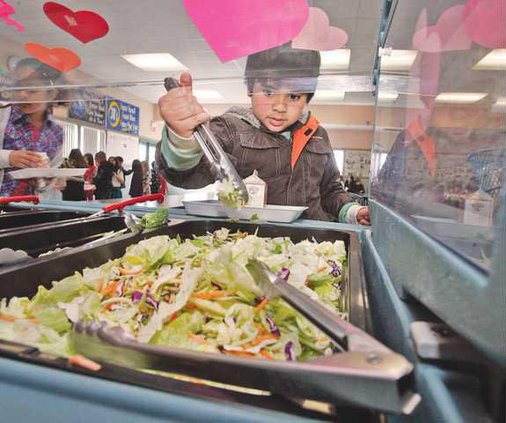Universal free school lunch — the new norm for California schools — could end up being a financial hardship for families struggling financially.
That’s because free meal service for all students in place for the school year starting next week — via the United States Department of Agriculture’s pandemic response and the State of California’s commitment going forward starting in the 2022-2023 school year to pick up the tab — doesn’t make filing a free and reduced meal application moot for qualifying households.
The meal application found on the Manteca Unified School District website on the musdnutrition.net page assures those students who qualify will be eligible to have the tab picked up for a lot more education-related expenses.
“It is extremely important that families who qualify to fill out the application,” noted MUSD Community Outreach Director Victoria Brunn.
Qualified students — depending on their household income — will be able to receive free or reduced prices on a wide array of educational related expenses. The list includes:
*Home to school transportation as well as that for athletic teams if the district opts to charge for it.
*Sports participation fees.
*Advanced Placement Exam fees.
*Qualification for financial aid for post-secondary education.
*Replacement of lost textbooks.
The potential impact on households with qualifying incomes for non-meal related charges if they fail to fill out the application is staggering. Prior to the pandemic Manteca served an average of 13,524 free meals and 3,065 reduced meals a day.
By failing to fill out the application almost 17,000 students’ families would be subject to a variety of school charges.
For example, if the district opts to follow the lead of Ripon Unified and charge $1 a day for a school bus pass for those that need to ride the bus their families would have to come up with $175 per child per school year.
Before the pandemic started in March 2020, the district served an average of 23,044 meals a day. Of those 6,455 were paid.
No student will be paying for a meal when school resumes on Thursday, Aug. 5.
The Seamless Summer Option funded by the federal government will operate throughout the upcoming school year. That allows all students to eat breakfast and lunch at no cost.
Meals will continue to look different than before the pandemic started as the Nutritional Education Department will continue to follow COVID-19 safety precautions. Those precautions include serving items that are individually wrapped or in to-go containers,
Nutrition Education Director Tracee Franks does not anticipate an increase in meal count due to all student lunch charges being dropped. At the same time breakfast service isn’t expected to be an issue. That’s because prior to the pandemic breakfast was served at no cost to all elementary students.
Superintendent Clark Burke said the only issues of concern are hits that the supply chain has taken due to the pandemic. The district has shifted in some instances to make more items from scratch.
Prior to the pandemic, the USDA has been reimbursing schools for all free and reduced meals. Since mid-March2020 when the pandemic started the federal agency reimbursed districts for all meals served to students.
Statewide 63 percent of California’s 6.2 million public school students before the pandemic qualified for the free and reduced meal program.
Districts this year are receiving $54 million to supplement USDA funds. The deal reached by Gov. Gavin Newsom and the California Legislature last month will spend $650 million annually to reimburse schools for meals so that no student will be charged.
Educators believe the move will assure that no child will fall through the cracks. It also eliminates having to collect lunch money from students who fail to pay.
Program eliminates absorbing
uncollected lunch charges
MUSD ended the 2017-2018 school year with $370,000 owed for meals. That was the first year a federal mandate was in place that required school districts to allow students to charge lunches if they don’t have the money to pay for a meal.
By the time collection efforts ended, the district’s general fund took a $121,000 hit that year. The general fund consists of unrestricted revenue that covers the cost of regular classroom teachers, support staff, and materials. In terms of beginning teacher salaries and benefits, the $121,000 represents the equivalent of almost two positions.
Until August of 2016, if a student didn’t quality for reduced or free meals and lacked the means to pay for lunch they received peanut butter and crackers along with a trip to the garden bar. Most other districts across the country served either a cheese or peanut butter sandwich. That all changed when the federal government said all students had to be served the same meal to avoid “shaming.” Districts like Manteca Unified had no choice but to accept charges.
Families with students who owed money may found out the hard way how not settling their debt could cost them. The district exercised legal options such as barring participation in activities that were deemed optional under state law such as after school sports. Ultimately, if the debt wasn’t paid by the end of their senior year the district barred them from participating in graduation ceremonies just as with any other outstanding debt such as lost textbooks.
In the initial year of being mandated to accept charges, some students “gamed” the system by saying they had no money, got the peanut butter and crackers as well as garden bar, and then pocketed the money.
To contact Dennis Wyatt, email dwyatt@mantecabulletin.com





